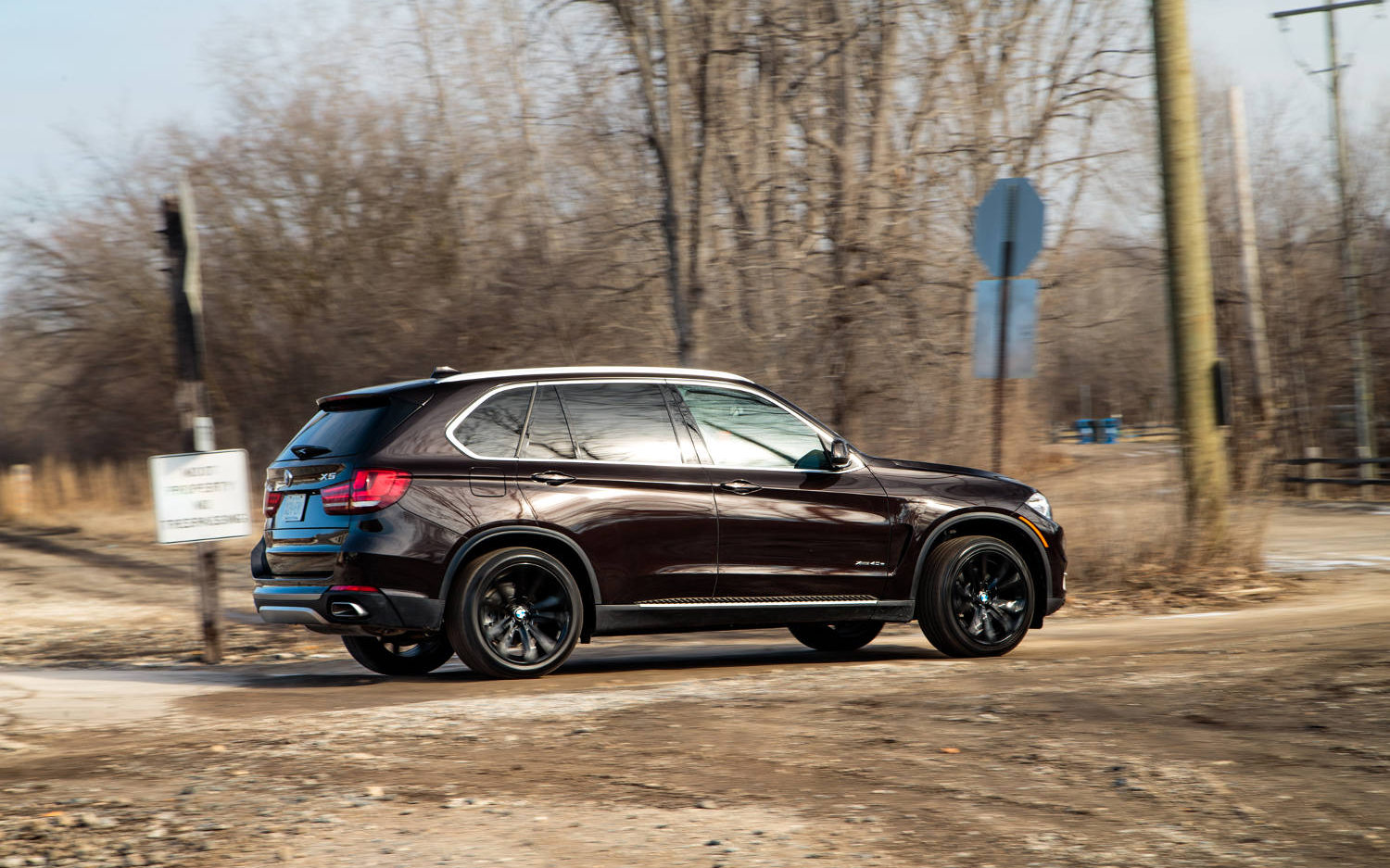At one point, it seemed that regulators were planning to end the production of new hybrid vehicles by 2030.
But why should this concern you? Hybrids offer an impressive combination of low emissions, cost-effective operation, and the convenience of being able to refuel quickly at any standard fuel pump.
They have gained popularity among both private buyers and company car users, and their commercial success over the last couple of decades has been remarkable.
There are many reasons why hybrids continue to appeal. They can help you save money at the petrol station and significantly reduce the amount of benefit-in-kind (BIK) tax if you’re a company car driver.
Hybrids With Smoothest Engine-To-Motor Transitions
This is largely because hybrids have lower emissions, and some even offer a practical electric-only driving range, making your daily commute almost entirely emissions-free.
Toyota Corolla
Among all hybrids, we believe the Toyota Corolla stands out as the best option available. It has earned a solid reputation for reliability and delivers outstanding fuel economy without the need to plug in.
Toyota has made significant progress in normalizing hybrid technology, and the Corolla is the best example of this progress in action.
The car combines stylish looks with a well-built cabin and has been carefully tuned for an impressive balance of ride comfort and handling agility.
While the 2.0-litre version offers a bit more performance, most people will find the 1.8-litre hybrid more than sufficient.
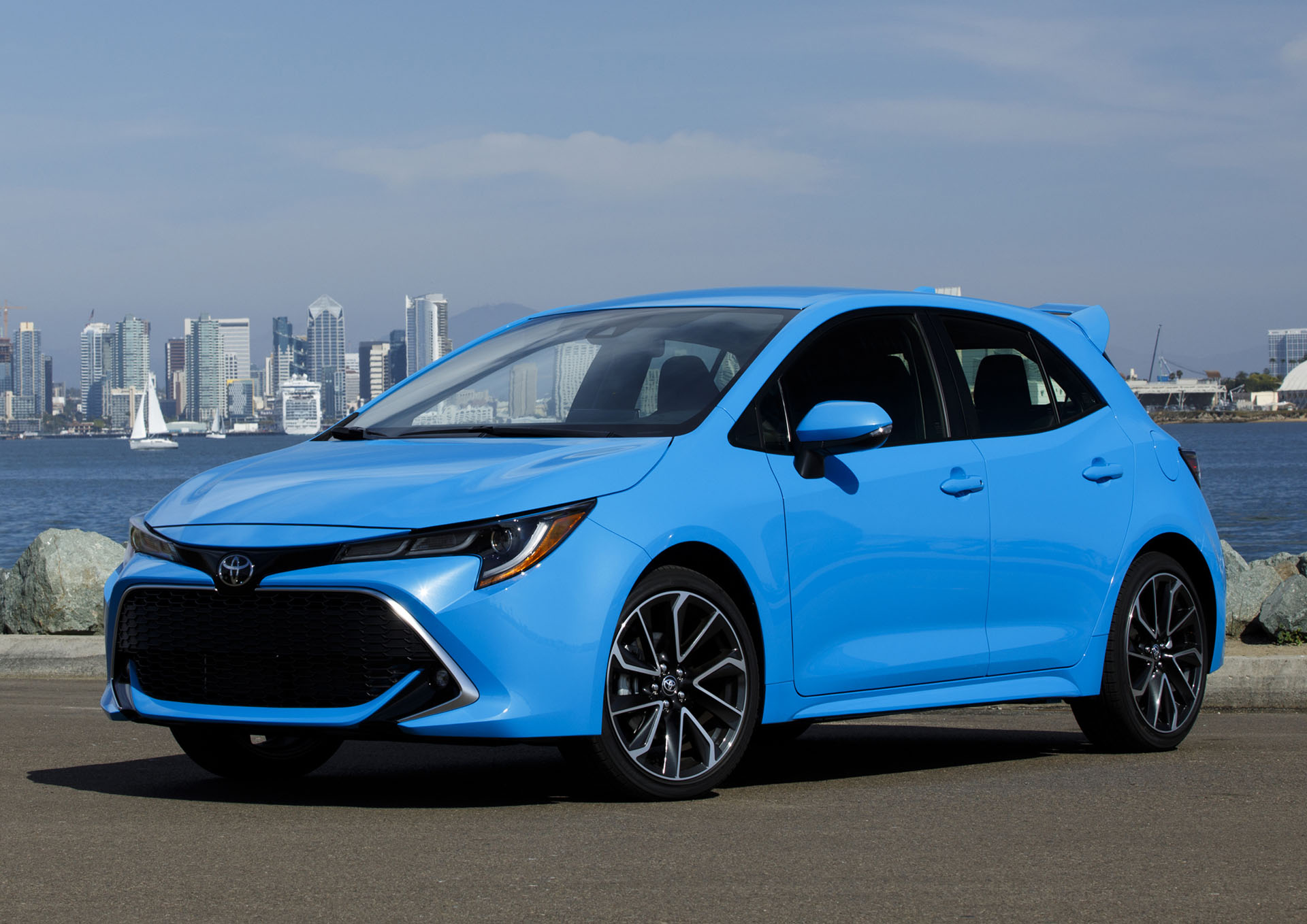
According to road tester Illya Verpraet, “While the 2.0-litre does offers some performance gains, the 1.8 will be sufficient enough for most people.”
The 1.8-litre version, which is even available in a Corolla Commercial van variant for those who need it, can regularly deliver around 70mpg in day-to-day driving when driven with fuel efficiency in mind.
Overall, the Corolla’s strong all-around credentials make it a smart choice. Owners can take comfort not just in the driving experience, but also in the fact that it keeps fuel costs low and offers a greener way to get around.
Despite a few drawbacks such as a dated infotainment system, limited interior space, and a CVT that can make the engine sound intrusive the Toyota Corolla remains a top pick for anyone seeking reliable and economical hybrid motoring.
Volkswagen Golf eHybrid
The latest Volkswagen Golf marks a strong return to form for what has long been considered the quintessential family hatchback.
Available in two plug-in hybrid variants the 201bhp eHybrid and the more powerful 268bhp GTE the eHybrid emerges as the preferred choice.
This version delivers an impressive 88 miles of electric-only range and offers a smooth driving experience, characterized by precise steering, composed handling, and a reasonably comfortable ride.
It’s not a car that begs to be taken for a spirited drive on twisty back roads, but its versatility and adaptability make it easy to live with and enjoyable in all kinds of settings.
According to road tester Illya Verpraet, “I’m normally on team manual gearbox, but the automatic found in the PHEV just suits the Golf better.”
The eHybrid’s ability to blend into any environment with ease, along with its overall usability, makes it especially appealing. However, there are some compromises.
The infotainment system can be frustrating to operate, and hybrid models have slightly reduced boot space, with capacity dropping to 273 litres. Even so, the Golf eHybrid remains a well-rounded option for those looking for electric range, comfort, and functionality in one cohesive package.
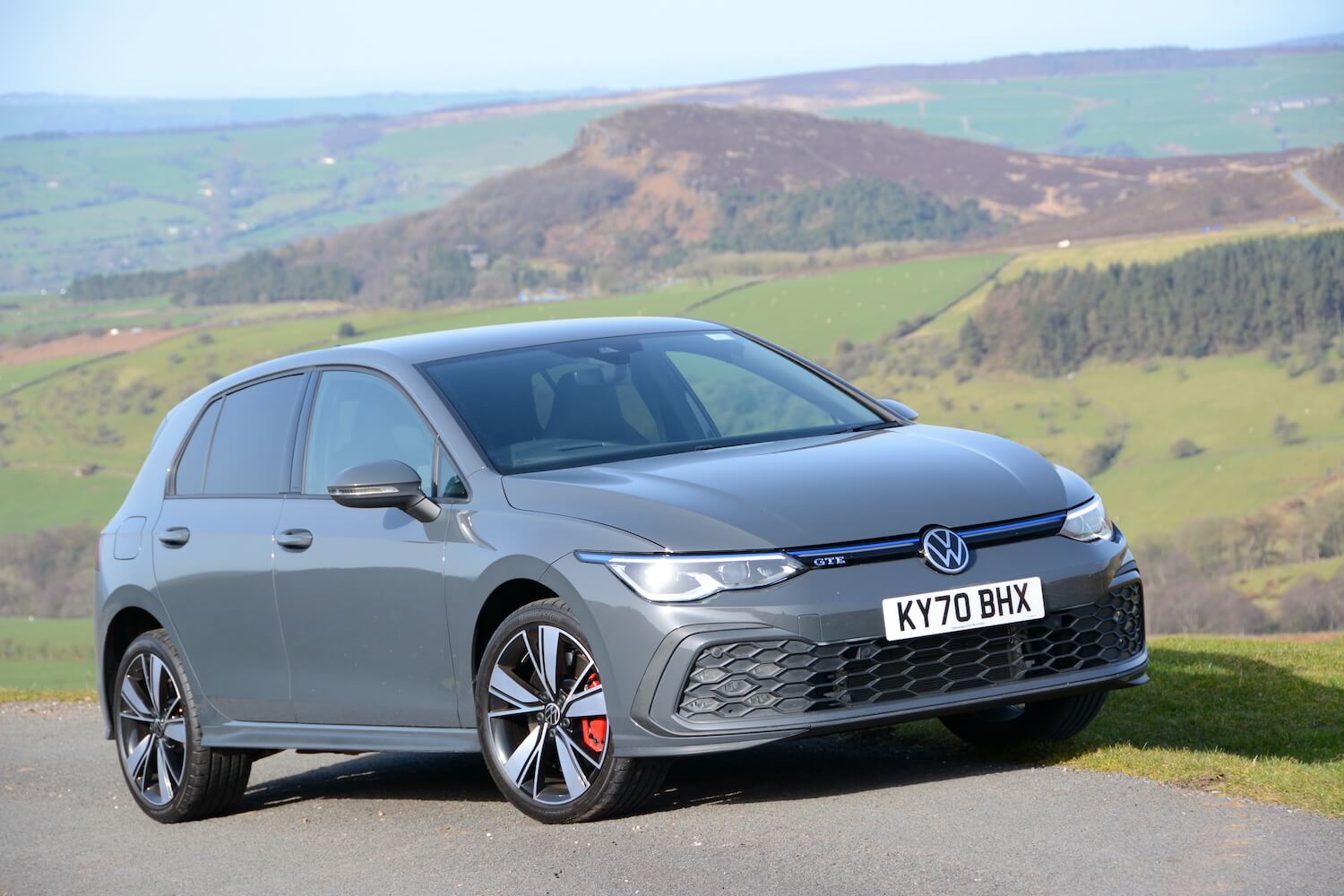
Naturally, it’s not the only hatchback that can make such a claim—this same powertrain has been fitted into the Cupra Leon, a closely related model and arguably one of its toughest competitors.
The Golf eHybrid also contends with several other vehicles in the segment that differ more substantially in their mechanical makeup, including the Toyota Corolla, Vauxhall Astra, Toyota CH-R, Audi A3 PHEV, and, for those willing to spend a bit more, the BMW 330e.
Despite that competition, the Golf eHybrid still stands out as a compelling choice for fleet buyers, supporting Volkswagen’s aim to reinvigorate the Golf’s popularity and push it back to the top of the sales charts in Europe.
Buyers have a single engine configuration to consider: a 1.5-litre four-cylinder paired with an electric motor, delivering a combined output of 201bhp and 258lb ft of torque. For those looking for more power, there’s also the GTE version—covered in a separate review—that raises the power figure to 268bhp.
Every eHybrid Golf is equipped with 17-inch alloy wheels, privacy glass, a rear-view camera, a 12.9-inch infotainment screen supporting Apple CarPlay and Android Auto, a digital instrument cluster, and ambient interior lighting.
According to VW, “unlike the GTE, the eHybrid is tuned for outright efficiency, comfort and electric range.” Still, since it’s positioned as a more premium offering within the Golf lineup, it retains independent rear suspension.
Volvo V60 T6
The Volvo V60 T6 Recharge offers a compelling mix of value, efficiency, and real-world versatility, echoing the qualities of classic Volvo family cars from decades past long before the brand leaned into bold, modern styling.
For a reasonable price, the V60 delivers an impressive all-around package, combining a usable electric range with spaciousness and everyday practicality.
It’s powered by a plug-in hybrid system that provides 345bhp and can sprint from 0 to 62mph in just 5.4 seconds, striking a balance between power and comfort.
Road test editor Matt Saunders notes, “It’s ultra-responsive on electric power at lower speeds and refined under combustive power thereafter.”
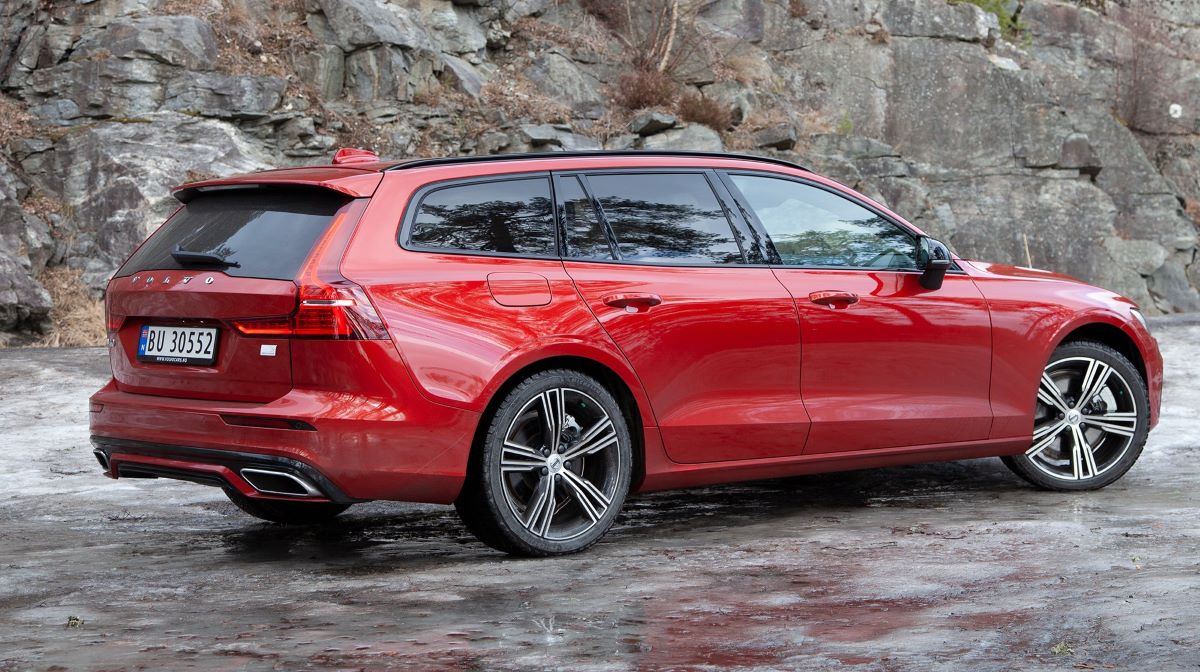
Although the ride doesn’t quite lead the class in comfort and the hybrid system can feel a bit unrefined at times, the car still presents a strong case for itself.
The interior is both smart and well-organized, filled with clever storage options and featuring a generous 519-litre boot that includes a practical pop-up load-bay organizer and an elasticated bag holder.
With a lab-verified electric range of 55 miles and significant potential for reduced running costs, the V60 T6 Recharge blends performance and practicality seamlessly.
BMW 550e
The BMW 5 Series, particularly the 550e, stands as one of the finest hybrids on the market, offering a rare combination of performance, luxury, and efficiency.
It’s a car that truly lets you “have your cake, eat it and lose weight,” thanks to a range-topping plug-in hybrid setup that features a 308bhp B58 six-cylinder petrol engine paired with a 194bhp electric motor.
Together, they produce 483bhp and enable the car to accelerate from 0 to 62mph in just 4.4 seconds.
The 550e’s standout traits include exceptional chassis balance, a refined ride aided by adaptive dampers, and a serene, i7-like driving experience when running in electric mode.
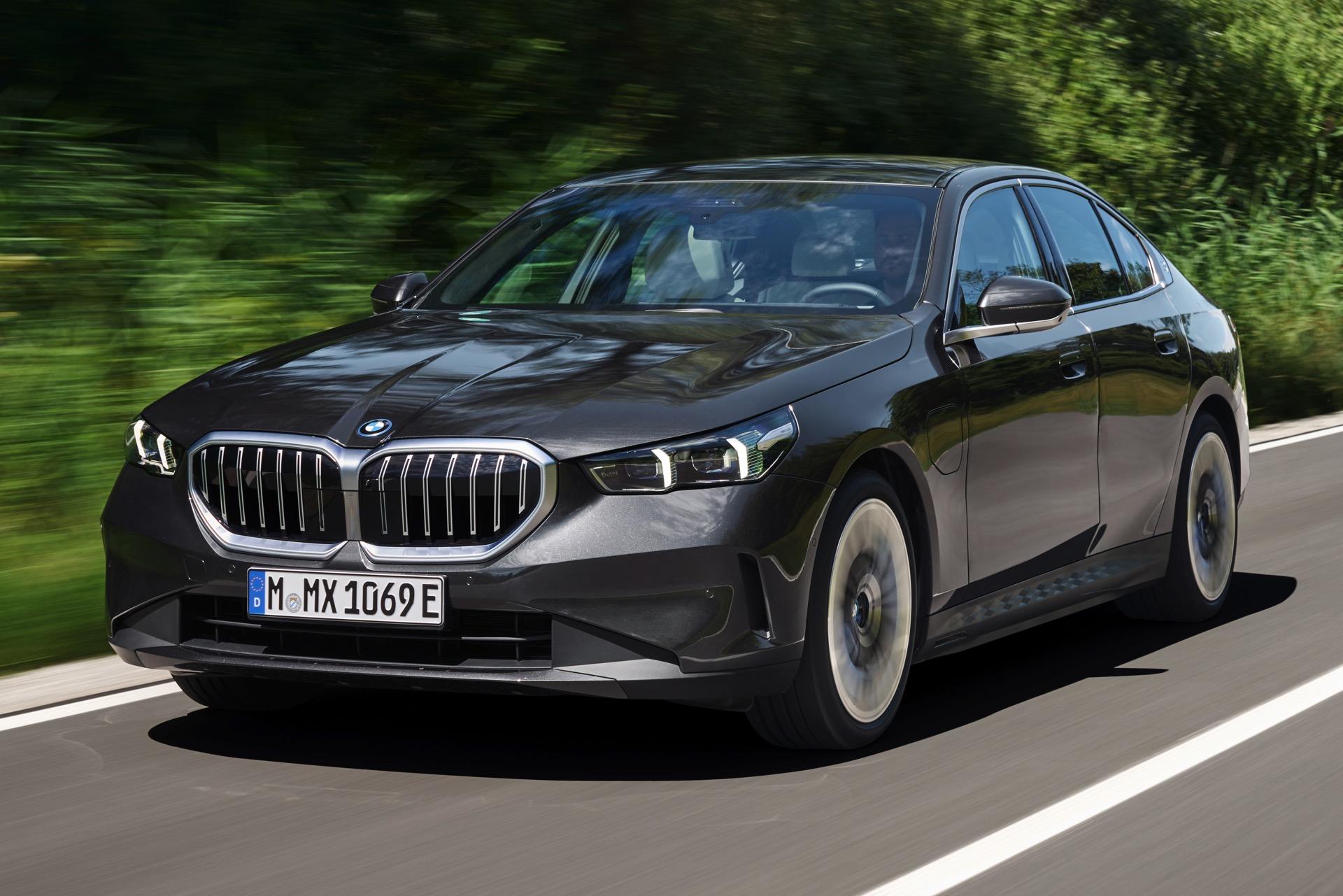
Road test editor Matt Saunders remarked, “The 550e is savage when it comes to roll-on acceleration.” Lower down the range, the lineup begins with a 2.0-litre, 205bhp mild-hybrid petrol (520i), followed by the 295bhp plug-in hybrid 530e.
Across the board, BMW’s engine refinement is notable, and the car’s handling capabilities shine, especially in long-distance commuting scenarios.
However, the interior ergonomics could be improved, the electric range isn’t class-leading, and the car’s large size might be intimidating in tight urban environments.
Still, the 550e’s blend of comfort and performance makes it a standout choice for hybrid luxury buyers.
The entry-level model in the lineup features a four-cylinder petrol engine. This 550, however, boasts a straight-six—woo hoo—but things get a bit more complex once you see its full name: the 550e xDrive M Sport.
Let’s break that down. The e indicates it’s a plug-in hybrid. xDrive means it powers all four wheels, not just the rear. And the M Sport designation goes beyond styling—it crucially includes rear-wheel steering and adaptive damping.
This combination of powertrain and chassis tech gives the car multiple personalities. Even better, each of those personalities is executed with impressive competence.
For context, the new 5 Series comes in a variety of flavours: pure petrol, plug-in hybrid (PHEV), and full electric (EV). It’s even offered as a diesel in mainland Europe—but not in the UK. Boo. I drove the 520d xDrive and found it smooth, quick enough, and impressively economical.
Now, let’s look at the 550e’s powertrain.
Under the bonnet is a 3.0-litre turbocharged straight-six petrol engine—tasty enough on its own. Pair that with an electric motor, and you get a combined 489bhp, propelling the car from 0 to 62mph in just 4.3 seconds.
The transition between petrol and electric power is beautifully smooth. Even in hybrid mode, when the engine cuts in and out, there’s barely a hint of it—no noticeable jolts.
Switch to sport mode and the engine stays live the whole time. With the electric motor delivering extra punch and the gearbox providing razor-sharp downshifts, you’re never off boost. The result? A shockingly quick car that delivers continuous, responsive power.
In electric mode, it’s got more than enough poke for typical city driving. The motor alone generates 197bhp, which is sufficient to maintain motorway speeds—though it takes a bit of time to get there.
The battery capacity is 19.4kWh. Depending on the tyres fitted, that translates to a WLTP range of about 60 miles. With access to a home or workplace charger, that’s a solid amount of daily electric-only driving. This car essentially offers two characters, both of them composed and confident, but with very different vibes.
In comfort mode (somewhat oddly called ‘personal’), it becomes a cruiser—effortlessly smooth and plush, with a ride quality that rivals a big Mercedes. The steering is accurate but prefers broader, sweeping inputs. It’s perfect for long, laid-back journeys. And the all-wheel drive keeps it reassuringly grounded.
Swipe over to sport mode, and everything tightens up. Four-wheel steering effectively shortens the car’s wheelbase, quickening and sharpening the steering. The suspension firms up, initial body roll is reduced, and the ESP eases back.
Power delivery gets a rear-wheel bias on exit from tight bends. The engine takes on a more aggressive tone, and the transmission becomes more responsive. Suddenly, it’s a car that feels wired directly to your inputs.
It’s genuinely impressive that a set of electronically managed systems can create something that feels this alive and natural. But they do.
Mercedes-Benz C300e
The Mercedes-Benz C300e is a plug-in hybrid that leans heavily into refinement, comfort, and electric efficiency.
Equipped with a battery that is nearly twice the size of many of its PHEV rivals, it offers an impressive electric range of up to 69 miles.
The C300e pairs a 2.0-litre turbocharged petrol engine with a 127bhp electric motor, producing a total of 308bhp and allowing the car to reach 62mph from a standstill in just 6.1 seconds.
Available in both saloon and estate body styles, it manages to maintain generous passenger and cargo space despite the added PHEV components.
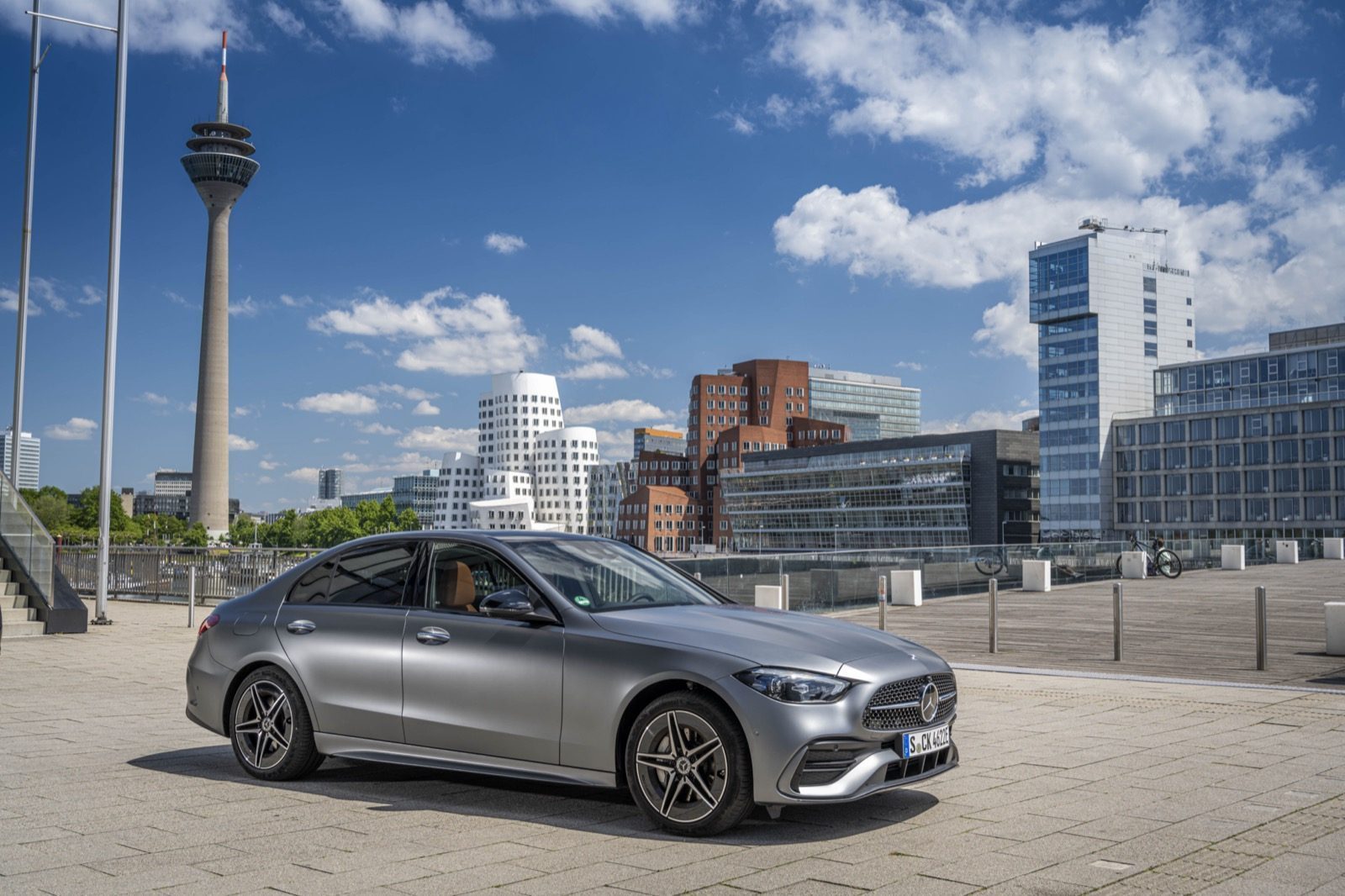
Digital editor Murray Scullion noted, “The chassis tune feels comfort-biased at all times, with plenty of suppleness, but it stops well short of floating or wallowing on cross-country roads.”
The C300e stands out for its smooth and quiet ride, drawing comparisons to a scaled-down S-Class with its laid-back luxury ambiance. That said, it’s not without drawbacks.
Cargo space is somewhat compromised, the fit and finish may not meet all expectations, and it lacks the dynamic engagement found in sportier alternatives.
Nonetheless, for company car drivers or those seeking refined comfort with a strong electric range, the C300e is a very attractive proposition.
Least Reliable Hybrid Cars That Jerk
Hybrid cars have come a long way from being viewed as the outcasts of the automotive world.
Just fifteen years ago, they were often dismissed by traditional car buyers, but today, it’s almost a given that any dealership will offer a hybrid or fully-electric version of most models.
These modern hybrids are generally more fuel-efficient than conventional petrol or diesel vehicles and are often more reliable, as the technology needs to meet higher standards right from the start.
However, not all hybrids live up to this reputation. In some cases, hybrid vehicles are rushed to market without sufficient development time compared to their purely combustion-engine counterparts.
Others may suffer from poor build quality or design flaws, making them less dependable and more costly in the long run.
To help you steer clear of the most problematic options, we’ve compiled a list of the 5 least reliable hybrid cars that could end up being a financial burden.
2016 Ford Focus Hybrid
Ford’s Focus has historically been praised for its engaging driving dynamics since its debut in 1998. Unfortunately, the 2016 Ford Focus Hybrid stands out for all the wrong reasons.
According to Consumer Reports, many owners expressed dissatisfaction with the car’s overall driving feel, with a disappointing score of 54/100 largely due to its underwhelming acceleration.
The hybrid version didn’t improve things either, as the most frequently reported reliability issue concerned malfunctioning display screens.
This problem wasn’t isolated to just the 2016 model, as the 2017 and 2018 Focus Hybrids also scored poorly in terms of reliability. If you’re in the market for a compact hybrid, this is definitely a model to avoid.
The Focus now features the SYNC 3 voice recognition and entertainment system. Additionally, the available 1.0-liter EcoBoost engine can be paired with an automatic transmission for the first time. The SE EcoBoost Appearance package receives new 16-inch wheels, and two new paint options have been introduced: Shadow Black and Kona Blue.
In Ford’s sedan and hatchback hierarchy, the Focus sits above the Fiesta but below the Fusion, C-Max, and Taurus. For buyers considering crossovers, the compact Ford Escape presents an alternative, though it comes with a noticeably higher starting price.
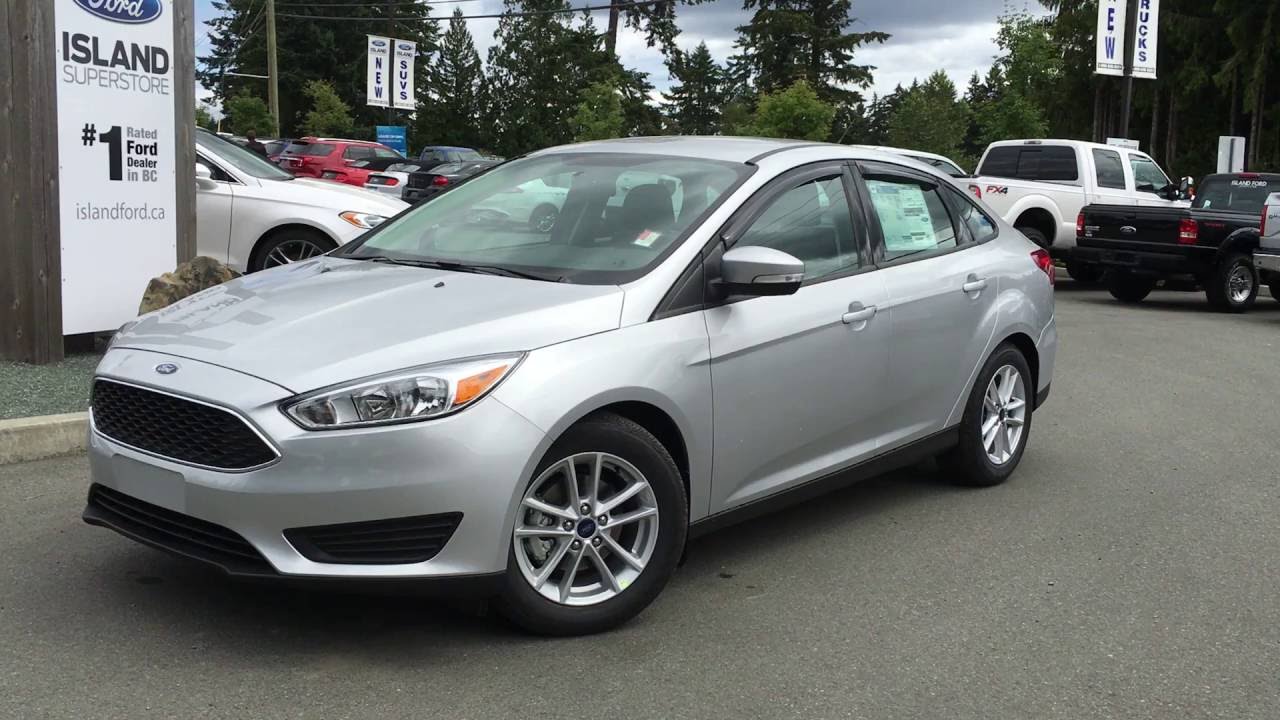
Within the performance range, Ford offers two high-powered Focus variants: the Focus ST and the Focus RS. For those seeking a more budget-friendly performance option, the smaller Fiesta ST is positioned at the entry level of the Ford Performance lineup.
The standard engine is a 2.0-liter inline-four, producing 160 horsepower and 146 lb-ft of torque. When paired with the six-speed dual-clutch automatic transmission, it achieves an EPA rating of 26-27 mpg in the city and 37-39 mpg on the highway. With the five-speed manual transmission, it delivers 26 mpg city and 36 mpg highway.
For improved efficiency, the optional 1.0-liter turbocharged inline-three delivers 123 horsepower and 125 lb-ft of torque. This engine returns 28/39 mpg with the six-speed dual-clutch automatic and an impressive 30/41 mpg when mated to the six-speed manual.
The Focus ST is equipped with a 2.0-liter turbocharged inline-four that delivers 252 horsepower and 270 lb-ft of torque, paired exclusively with a six-speed manual transmission. It achieves 22 mpg city and 30 mpg highway.
At the top of the performance range, the Focus RS features a 2.3-liter turbocharged inline-four producing 350 horsepower and 350 lb-ft of torque. It also comes with a six-speed manual and returns 19 mpg in the city and 25 mpg on the highway. The fully electric Focus Electric offers a total driving range of 76 miles per full charge.
All Focus models are front-wheel drive, with the exception of the Focus RS, which comes standard with all-wheel drive. The ST and RS variants are only available as four-door hatchbacks, whereas other Focus models are offered in both sedan and hatchback body styles.
The BMW X5 meets many of the expectations for a midsize luxury SUV. It offers a high-quality, well-appointed interior with ample passenger space in both the first and second rows.
The available powertrains are diverse, ranging from a fuel-efficient plug-in hybrid and a torque-rich diesel to a refined turbocharged inline-six and a powerful twin-turbo V-8. Even the infotainment system ranks among the most intuitive and user-friendly in the segment.
However, the X5 falls short in one area where a BMW should excel—driving dynamics. It lacks the nimbleness and steering feel that are usually synonymous with the brand. The optional third row, while seemingly practical, is cramped and only really suitable for small children, and its use reduces cargo space significantly.
For 2017, the BMW X5 receives only minimal updates. The infotainment system is upgraded to the latest iDrive 5.0 version, and newly available features include wireless smartphone charging and an onboard Wi-Fi hot spot. Pricing for the 2017 X5 starts at $57,595 for the base model, while the iPerformance plug-in hybrid begins at $64,195.
Under the hood, the base rear-wheel-drive X5 is powered by a smooth and refined 3.0-liter inline-six engine that generates 300 horsepower, with optional all-wheel drive.
A 3.0-liter turbocharged diesel inline-six is also available, offering 255 horsepower and a substantial 413 lb-ft of torque, along with an EPA-estimated 24 mpg in the city and 31 mpg on the highway. For buyers focused on fuel economy, the X5 iPerformance features a turbocharged 2.0-liter four-cylinder engine paired with an electric motor and lithium-ion battery.
This plug-in hybrid setup produces a combined 308 horsepower and 302 lb-ft of torque, and it offers an estimated 14 miles of electric-only range. At the top of the range is a twin-turbocharged 4.0-liter V-8, which delivers 445 horsepower in the xDrive50i and a staggering 567 horsepower in the high-performance X5 M.
Despite this impressive range of powertrains, the X5 doesn’t match them with equally capable handling. Steering feedback is lacking, and the vehicle displays a noticeable amount of body roll. The suspension feels overly stiff yet struggles with large bumps and rough surfaces, which compromises ride comfort.
When it comes to fuel economy, it’s important to note that EPA testing and reporting standards have evolved over time. For the most accurate and current ratings on both new and older vehicles, it’s best to consult the EPA’s official website and use the “Find & Compare Cars” tool.
Inside, the X5 offers a comfortable and premium environment, especially for those seated in the first two rows. The interior reflects the SUV’s high price point with quality materials and thoughtful design.
The optional third-row seat, however, is best avoided—it’s extremely tight, even for children, and it eats into cargo capacity when in use. Standard interior features include dual-zone climate control, power-operated and heated front seats, a panoramic moonroof, and a power-adjustable steering column.
The overall design is clean and functional, which stands out positively in a class where some competitors favor more cluttered or overly stylized cabins. BMW offers extensive customization, with options such as high-end leather trim, M Sport pedals, heated and ventilated front seats, a heated steering wheel, and much more.
That said, the base X5 already carries a higher price tag than many of its competitors, and adding optional features can cause the cost to climb steeply. While the extras enhance comfort and luxury, they also push the X5 well beyond the price range of some direct rivals.
2014 Mitsubishi Outlander Hybrid
The Outlander Hybrid has become a key model for Mitsubishi, especially in the European market, where it remains a popular choice for city drivers and taxi services alike.
Despite this popularity, the 2014 model was plagued by several issues. Security concerns emerged early on due to vulnerabilities in the keyless entry and ignition systems, which were easy to bypass.
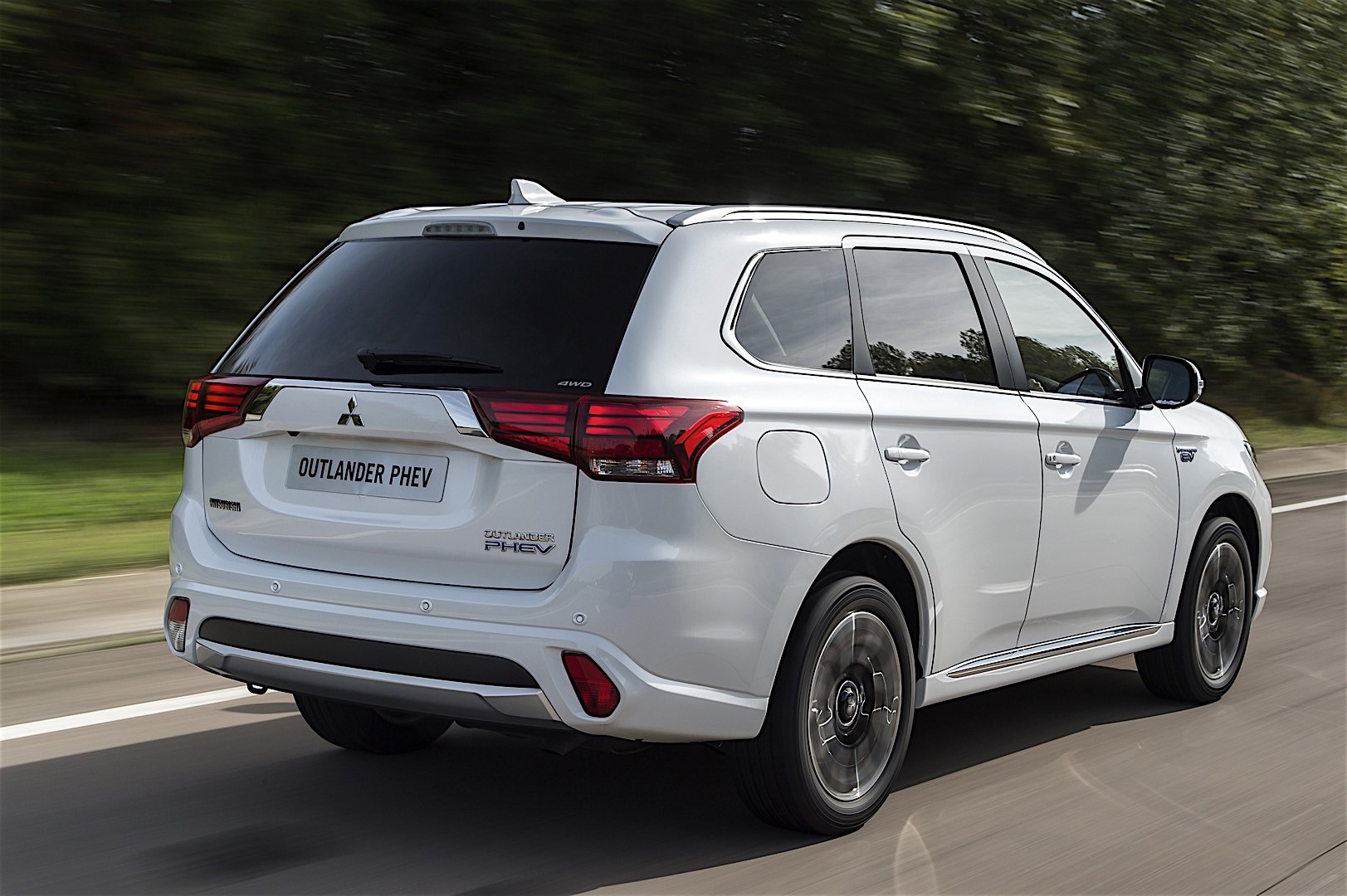
The most persistent problems have been electrical in nature, including battery failures, air conditioning glitches, and other non-engine electronic faults.
Although Mitsubishi typically covered the cost of repairs even outside of the standard warranty owners often had to wait more than a week for service.
These reliability concerns are a serious drawback for what is otherwise a widely used urban hybrid.
2017 BMW X5 Hybrid
The BMW X5 has long held a reputation for being one of the most rewarding SUVs to drive, offering a blend of performance, luxury, and practicality.
The 2017 model introduced a plug-in hybrid version featuring a lithium-ion battery and electric motor paired with a four-cylinder engine.
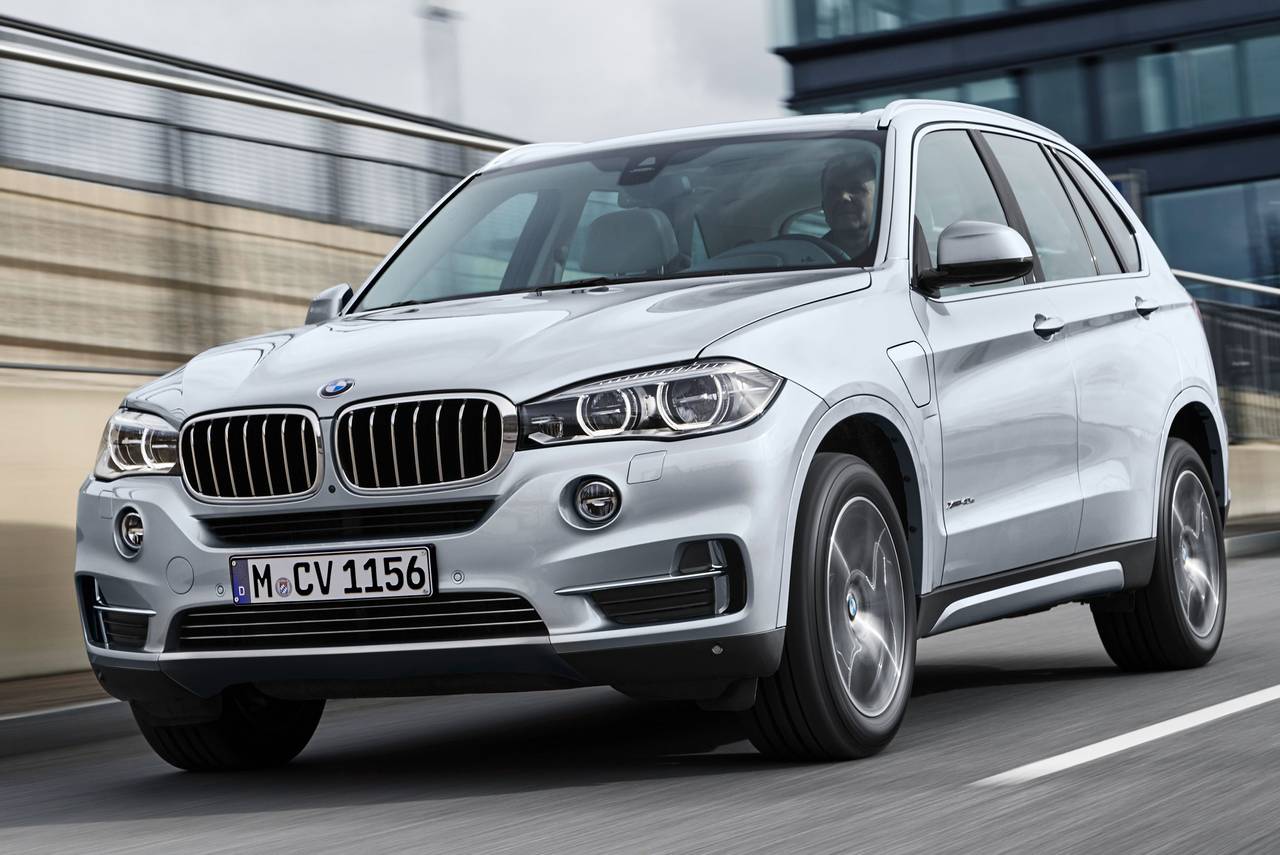
While it looked promising on paper, it failed to meet expectations when it came to dependability. Consumer Reports gave the 2017 X5 Hybrid a dismal reliability score of just 1 out of 5.
The most common complaints involved issues with the climate control system, suspension, and fuel system an especially disappointing outcome considering the X5’s premium pricing.
For a vehicle meant to represent BMW’s engineering excellence, the hybrid version fell far short.
2016 Toyota Prius
Back in the early 2000s, the Toyota Prius was the poster child for hybrid skepticism among car enthusiasts, often ridiculed by driving purists.
Despite the mockery, it went on to become the best-selling hybrid car globally, thanks in part to being the first mass-market hybrid even though the Honda Insight reached Western markets slightly earlier and arguably looked better.
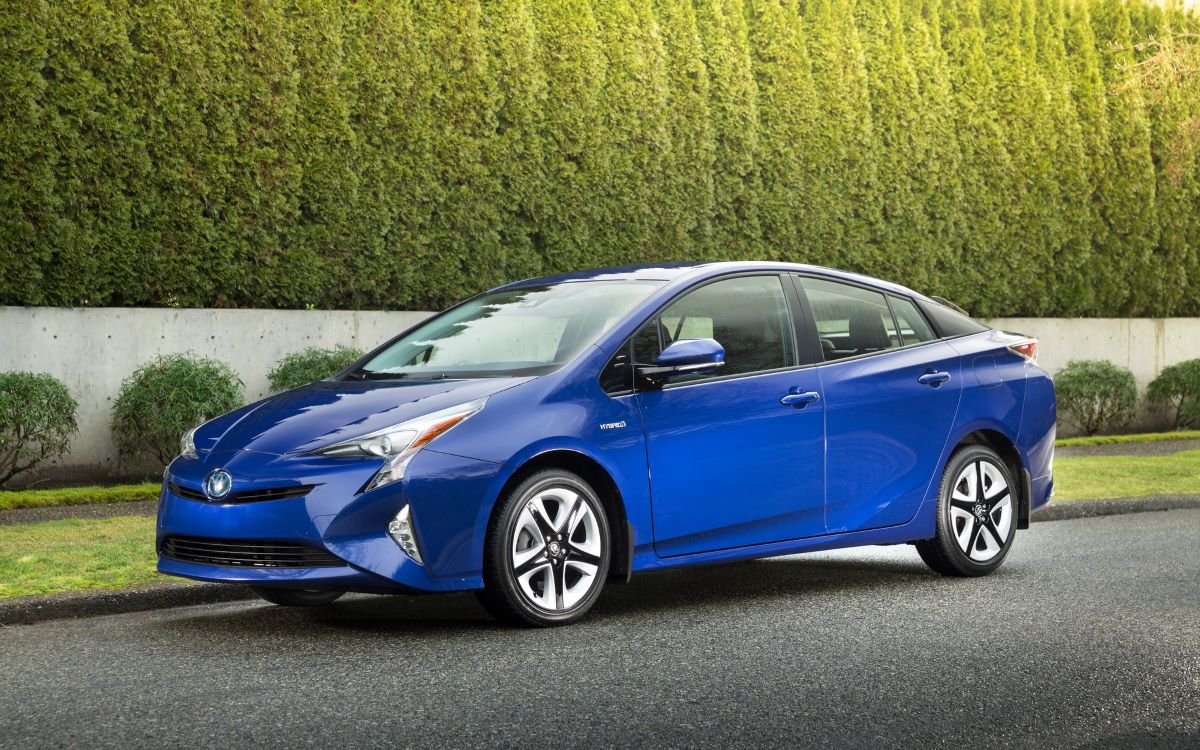
In more recent years, the Prius has gained broader acceptance as a practical and efficient car. However, the 2016 model was less reliable than others in the Prius lineup.
While Toyota is known for building dependable vehicles, owners of the 2016 Prius reported minor problems, particularly with the infotainment system.
Fortunately, Toyota covered the costs, which generally didn’t exceed $65, but the model still ranks lower than its siblings in terms of overall reliability.
Owning the 2016 Prius proves to be a cost-effective choice, with projected expenses for gas, insurance, repairs, and maintenance totaling just $17,400 over five years—roughly $3,500 per year.
This figure is notably lower than average for compact cars. Only a couple of competitors in the class, the 2016 Nissan Leaf and Chevrolet Volt, have lower five-year ownership costs, coming in at $15,600 and $16,600, respectively. The key advantage those models hold comes from fuel savings, as both the Leaf and Volt offer extensive all-electric driving capabilities.
When deciding between buying a used or new Prius, price is an important consideration. The 2018 Prius starts at $23,475, which is higher than the average cost of a 2016 model.
If budget is a priority and you’re targeting a base trim, buying used will certainly save you money. However, there’s a significant upside to going with a newer model. Starting in 2017, Toyota began outfitting all Prius trims with its Safety Sense P package.
That means every 2017 and 2018 Prius includes adaptive cruise control, forward collision warning, and lane departure warning as standard features. If those are high-priority features for you, it might actually be more cost-effective to choose a newer model rather than hunting down a used one with optional safety tech installed.
Alternatively, buyers might want to look at the 2018 Toyota Prius c. It’s the smallest option in the Prius lineup and is available at around the same price as the average used 2016 Prius. While the Prius c doesn’t offer as much seating or cargo space as the standard Prius, it compensates with a strong suite of safety features and compact dimensions that make urban parking far easier.
When it comes to reliability, the 2016 Toyota Prius stands out, earning a perfect five-out-of-five rating from J.D. Power, which reflects its strong reputation for long-term dependability.
However, prospective buyers should be aware that there are multiple safety recalls affecting the 2016 Prius. One issue involves the front and side-curtain air bag sensors, which may fail to trigger air bag deployment during a collision.
Another recall addresses a flaw in the passenger-side front air bag, which could gradually inflate over time. Additionally, a separate recall concerns a defect in the parking brake cable. Before purchasing a used 2016 Prius, it’s essential to verify that all applicable recall repairs have been completed.
2020 Ford Escape Hybrid
The 2020 Ford Escape Hybrid was designed to offer an affordable entry into hybrid driving, with a starting price of under $30,000.
It came equipped with a 2.5-liter four-cylinder engine and two electric motors, delivering surprisingly good driving dynamics for an entry-level crossover.
However, the lower price point became easier to understand once the reliability issues surfaced. Consumer Reports rated it just 1 out of 5 for reliability due to a range of problems.
The most frequently reported issues were with the infotainment system, which often froze or crashed. More worryingly, there were also cases of both major and minor engine failures.
Despite its affordability and decent performance, these flaws made it one of the least reliable hybrid options on the market.
The 2020 Escape Hybrid’s as-tested 0–60 mph acceleration time lags nearly two full seconds behind that of the turbocharged 2.0-liter version, coming in at 8.7 seconds compared to the 2.0T’s 6.9 seconds.
Still, the hybrid could very well be the smarter choice between the two. The 2.0T’s speed and overall value don’t quite measure up when stacked against competitors like the Mazda CX-5 Signature, which also features a turbocharged engine.
In testing, our all-wheel-drive 2020 Escape Hybrid trailed the Toyota RAV4 Hybrid by just over a second—Toyota’s entry completed the sprint in 7.5 seconds. That said, the average hybrid shopper likely doesn’t share the same need for speed as those gravitating toward the Escape 2.0T, so the performance gap may not be a deal-breaker.
Unlike Toyota, Ford gives buyers the flexibility of choosing either FWD or AWD for the hybrid model, while the plug-in hybrid is available only with FWD.
On the road, Ford deserves credit for giving the Escape Hybrid brakes that mimic the feel of traditional, non-hybrid systems almost until the very end of the pedal stroke—though they do clamp down more sharply than some drivers might expect if they’re new to hybrids.
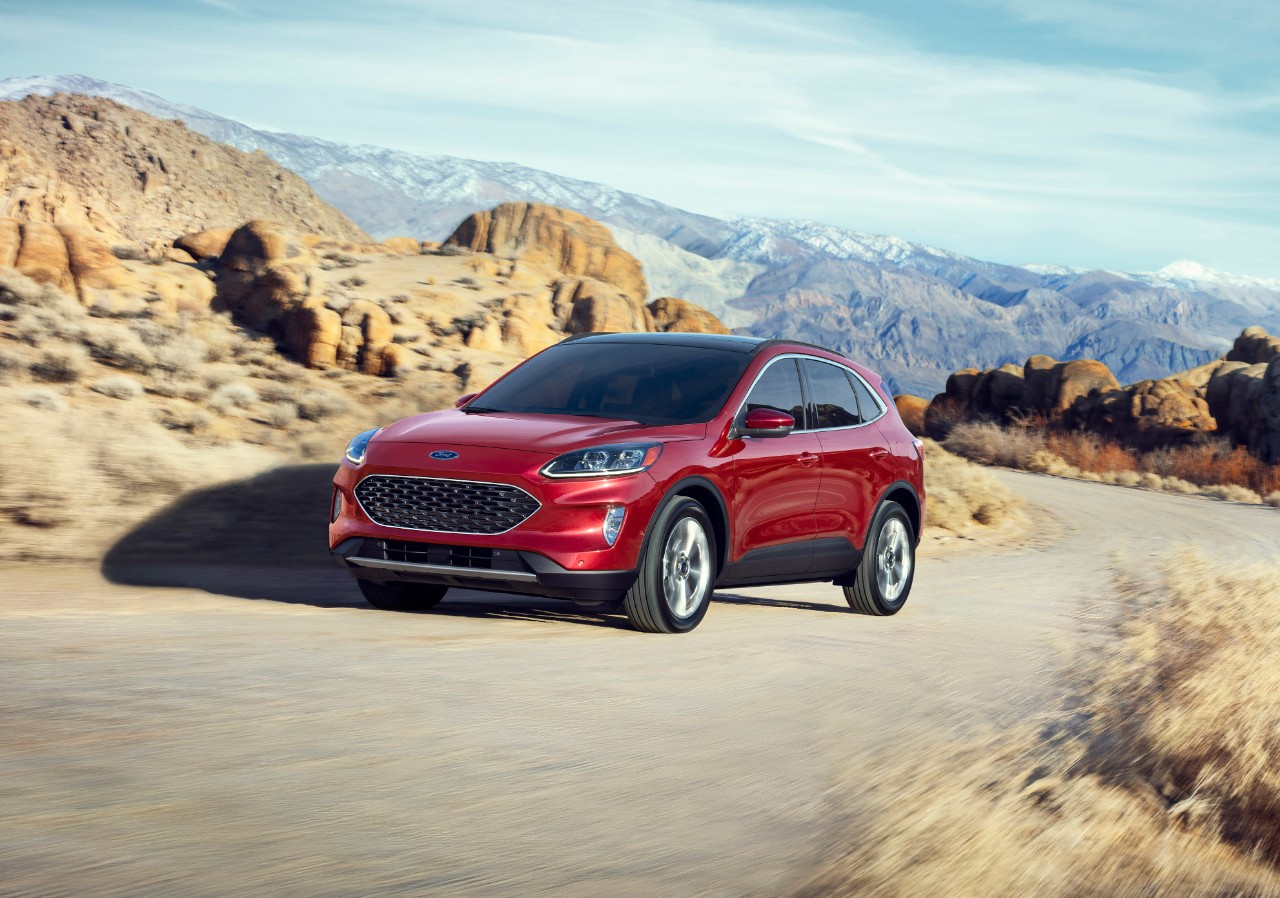
On the test track, the hybrid stopped from 60 mph in 122 feet, which is actually better than the 2.0T’s 123 feet and significantly better than the 1.5T’s 128 feet.
However, the hybrid model sacrifices a bit of the light, agile character that’s appreciated in the 1.5T and 2.0T variants. It still drives well overall, but drivers should avoid aggressive transitions—like jumping from a partial stop into a quick acceleration—because this can trigger some unrefined drivetrain behavior.
On MotorTrend’s figure-eight test, which evaluates how a car accelerates, brakes, corners, and transitions between those actions, the Escape Hybrid completed the circuit in 28.3 seconds at an average grip of 0.60 g. That result is nearly identical to the FWD Escape 1.5T, which managed 28.2 seconds at 0.62 g, but falls short of the AWD Escape 2.0T’s 27.7 seconds at 0.64 g.
Overall, the hybrid delivers solid responsiveness, and its drivetrain behavior, along with a sharp 12.3-inch digital instrument cluster, works well.
However, neither of those features can fully distract from the sense of cheapness that permeates the cabin. Our 2020 Escape testers were pre-production prototypes, so it’s possible Ford may refine some of the interior issues before final production.
That said, choosing the Escape Hybrid does come with some compromise in cargo space. The RAV4 Hybrid offers 37.0 to 37.6 cubic feet of cargo room with the rear seats up, whereas the 2020 Escape Hybrid and plug-in hybrid provide between 30.7 and 34.4 cubic feet, depending on how far forward the rear seats are adjusted—the space is identical for both versions. And to answer the obvious follow-up: Escape hybrids offer 2.8 to 3.1 cubic feet less space than their non-hybrid counterparts.
While this might not seem impressive when you’re directly comparing the Escape Hybrid to the RAV4 Hybrid, it’s important to remember that the two vehicles are cut from different cloth. The latest Ford Escape departs drastically from its boxy, first-generation roots and leans into a soft, suburban aesthetic that stands in contrast to the more rugged styling of the RAV4.
That Toyota may be quicker and more spacious, but whether it—or the forthcoming CR-V Hybrid—is also more fuel-efficient is still unclear. Until the EPA releases its official numbers for the Escape Hybrid, we can cautiously recommend Ford’s new entry. If its drawbacks don’t bother you, its stylish design and hybrid efficiency may make it the best choice in the 2020 Escape lineup.

